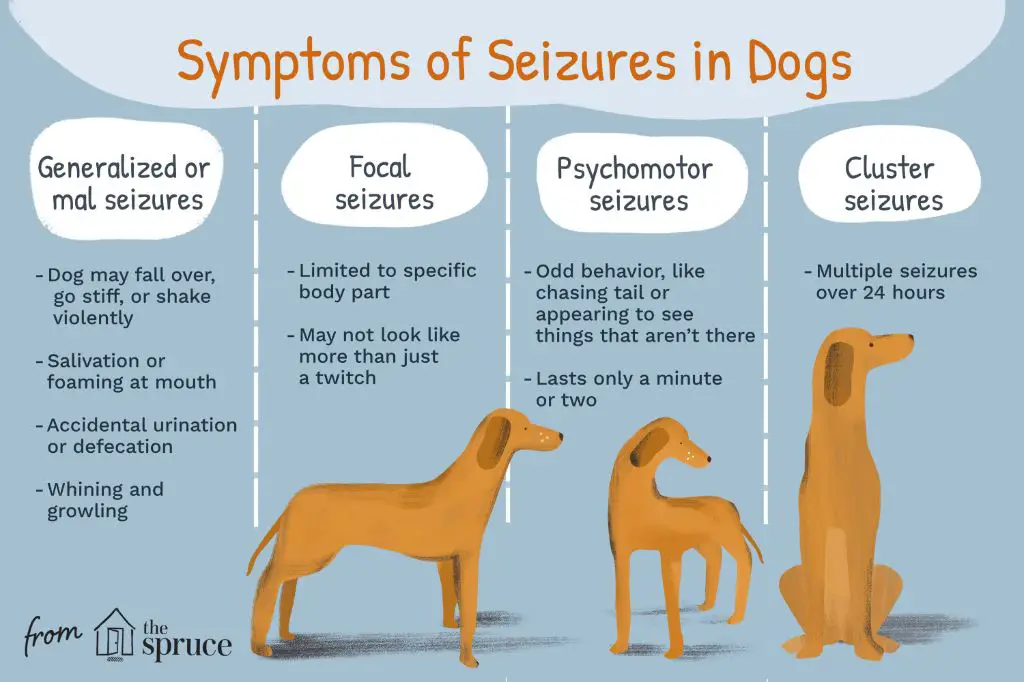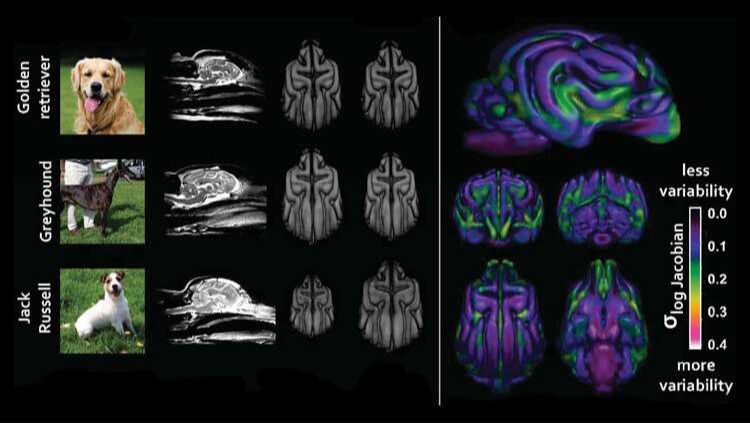Introduction
Seizures are episodes of uncontrolled electrical activity in the brain that can cause changes in behavior, movements, and consciousness in dogs. While they are more common in certain breeds and dogs under the age of 5, seizures can also start suddenly in previously healthy adult and senior dogs.
When a dog who has never had a seizure before experiences one, especially in their senior years, it can be scary and concerning for owners. There are several potential underlying causes for new onset seizures in dogs, ranging from metabolic disorders to brain tumors. In this article, we’ll examine some of the most common reasons an adult or senior dog may suddenly begin having seizures.
What are Seizures?

Seizures are episodes of uncontrolled electrical activity in the brain that can cause changes in behavior, movements, and feelings (VCahospitals.com). They are sometimes referred to as “fits.”
During a seizure, the electrical signals in the brain become scrambled. This causes the dog to experience sudden involuntary changes in behavior, movements, sensations, or states of awareness. Common symptoms of a seizure in dogs include:
- Loss of consciousness
- Stiffening or rigid muscles
- Collapsing
- Paddling of the legs
- Jerking movements
- Loss of bowel or bladder control
- Excessive drooling or foaming at the mouth
Seizures usually last from 30 seconds to 2 minutes. After the active seizure ends, there is generally a post-ictal period where the dog may seem disoriented, restless, wobbly, or temporarily blind before returning to normal.
Common Causes
There are several potential causes for seizures in dogs. Some of the most common include:
Epilepsy – Epilepsy is the most common cause of seizures in dogs. It is a chronic neurological disorder characterized by recurrent, unprovoked seizures. The exact cause is unknown but it is believed to be genetic in many cases (vcahospitals.com).
Metabolic disorders – Conditions that affect the metabolism such as liver disease, kidney disease, low blood sugar, and electrolyte imbalances can trigger seizures (webmd.com).
Toxins and poisonings – Ingestion of toxins like lead, household chemicals, plants, or foods like chocolate or xylitol can cause seizures in dogs (webmd.com).
Brain tumors – Brain tumors put pressure on the brain which can initiate seizures. Seizures may be the first sign of a brain tumor in dogs (allpetsvh.com).
Other causes – Other less common causes include head trauma, anemia, encephalitis, hydrocephalus, and portosystemic shunts (vcahospitals.com).
Epilepsy

Epilepsy is one of the most common neurological disorders in dogs and is a leading cause of seizures. It is characterized by recurrent, unprovoked seizures. Epilepsy can be either idiopathic (primary) or symptomatic (secondary). Idiopathic epilepsy has no identifiable structural brain lesion or other nervous system abnormality and accounts for 50-70% of epilepsy cases. Symptomatic epilepsy is the result of identifiable brain lesions from inflammation, trauma, anatomic abnormalities, infectious diseases, toxicities, metabolic disorders, or neoplasia.
The prevalence of epilepsy in dogs is estimated to be 0.6-0.75%. Certain breeds like Belgian Shepherds, Beagles, Dachshunds, German Shepherds, Golden Retrievers, Irish Setters, Keeshonds, Labrador Retrievers, Poodles, Saint Bernards, Siberian Huskies, and Wire-haired Fox Terriers have a higher prevalence. The average age of onset is between 1-5 years, but epilepsy can develop at any age.
Seizures often manifest as sudden, uncontrolled muscle activity like jerking, twitching, stiffening, staring, chomping, frothing at the mouth, paddling of limbs, or loss of consciousness. They usually last 1-3 minutes followed by a post-ictal phase of disorientation and fatigue. Diagnosis involves ruling out other causes through blood tests, MRI, and EEG. Long-term anti-seizure medication is the mainstay of treatment to reduce seizure frequency and severity.[1]
With proper management, dogs with idiopathic epilepsy can often live normal lives. It’s important for owners to keep a seizure log, avoid seizure triggers, and work closely with their veterinarian to find the optimal treatment regimen for their dog.
Metabolic Disorders
Some metabolic disorders that can cause seizures in dogs include:
Diabetes: Uncontrolled diabetes can lead to severely low blood sugar (hypoglycemia), which can trigger seizures. Diabetic dogs that are prone to hypoglycemic episodes are at higher risk.1
Liver Disease: Dogs with liver disease and resulting liver failure can develop a condition called hepatic encephalopathy. This causes toxins to accumulate in the bloodstream and affect brain function, potentially leading to seizures.2
Kidney Failure: Similar to liver disease, kidney failure allows toxins to build up in the bloodstream. This condition, known as uremic encephalopathy, can cause seizures in dogs.3
Toxins and Poisonings

Accidental ingestion of various toxins and poisons is another potential cause of seizures in dogs. Common toxins that can trigger seizures if ingested include:
- Lead – Sources include lead-based paints, batteries, fishing weights, and contaminated soil or water
- Pesticides – Insecticides, herbicides, rodenticides
- Medications – Prescription drugs, over-the-counter medications
- Recreational drugs
- Plants – Sago palms, azaleas, oleander, castor beans
- Blue-green algae
- Chemicals – Antifreeze, paint, varnish, gasoline
Dogs can accidentally ingest these toxins by eating or drinking contaminated substances. Exposure can also occur by absorbing toxins through the skin. The toxins affect the nervous system, triggering seizures. Immediate veterinary treatment is critical for dogs exhibiting seizures due to toxin exposure. Decontamination and administering anti-seizure medications helps stop the seizures while the toxins are flushed from the body.
Pet owners should be aware of potential toxins around the home and yard and keep these hazards out of reach of their dogs. Supervise dogs when outside to prevent ingestion of dangerous plants, algae or wildlife. Follow label instructions carefully when using chemicals and properly dispose of old medications.
Brain Tumors

Brain tumors are abnormal growths of tissue in the brain and can be a cause of seizures in dogs. According to the VCA Animal Hospitals, “The most common sign of a brain tumor in a dog is seizures. Any time a new onset of seizures is observed in a dog 5 years of age or older, a brain tumor must be considered as a potential cause” (Source). Brain tumors put pressure on surrounding brain tissue which can irritate the brain and trigger seizures.
Brain tumors often cause severe, recurrent seizures in dogs as described by Davies Veterinary Specialists: “These seizures are often very severe causing the animal to collapse, salivate profusely, thrash around and occasionally void its bowels and bladder” (Source). Tumors in the brain disrupt normal electrical activity and can cause seizures. Brain tumors should be suspected as a potential cause, especially in older dogs with new onset of seizures.
Other Causes
While epilepsy and metabolic issues are the most common triggers, seizures in older dogs can also occasionally stem from less common causes like stroke, head trauma, infections, liver or kidney disease, brain tumors, or exposure to toxins.
A stroke, head injury, or infection in the brain can all potentially disrupt normal electrical brain activity and bring about seizure activity. Liver or kidney dysfunction can lead to a buildup of toxins that affect the brain. Tumors may also directly irritate brain tissue. And ingestion of toxins like lead, fertilizers, or pesticides can be toxic to the brain.
While less common, it’s important to rule out these potential causes, especially if the seizures develop suddenly in an older dog. Diagnostic testing like bloodwork, urinalysis, imaging, and cerebrospinal fluid analysis may be needed to uncover an underlying infection, toxin exposure, or other cause.
Diagnosis
To diagnose the cause of seizures in dogs, veterinarians typically start with a thorough physical and neurological examination. They will look for any signs of injury, illness or abnormalities that could be causing the seizures.
Initial screening tests usually include a complete blood count, biochemical profile, and urinalysis to look for potential metabolic causes like liver or kidney disease, electrolyte imbalances, or infections (Testing for Seizures – VCA Animal Hospitals).
If those tests are normal, the vet may recommend advanced imaging such as MRI or CT scans to look for brain tumors, inflammation, or other abnormalities. They may also perform a cerebrospinal fluid analysis to look for evidence of inflammation or infection in the brain and spinal cord (Diagnostic Testing for Epilepsy and Seizures in Dogs).
In some cases, if no underlying cause is found, the dog may be diagnosed with idiopathic or primary epilepsy. However, vets will first need to rule out other potential causes through diagnostic testing (Idiopathic Epilepsy | Seizures in Dogs and Cats).
Treatment
There are several treatment options for dogs with seizures, including medications, surgery, and dietary changes.

The most common medications used to treat seizures in dogs are phenobarbital and potassium bromide. Phenobarbital has been used to control seizures in dogs for decades and is often the first medication vets prescribe. It helps suppress seizure activity in the brain. Potassium bromide is also effective at reducing seizures. Some other anticonvulsant medications that may be used include levetiracetam, zonisamide, and gabapentin. Finding the right medication or combination of medications takes some trial and error between the vet and pet owner.
In some cases, when seizures are localized to one area of the brain, surgery may be an option. This involves removing the portion of the brain that is causing the seizures. However, this is only possible if the seizures originate from a single focal point and the area of the brain can be safely removed. The surgery can eliminate seizures or greatly reduce their frequency.
Dietary changes may also help control seizures in some dogs. In particular, high fat, low carbohydrate diets like the ketogenic diet may reduce the frequency and severity of seizures. This forces the body to burn fat instead of glucose for energy. Consult a veterinary nutritionist when considering dietary changes for seizure control.
It’s important to work closely with your veterinarian to determine the safest and most effective treatment plan for your dog’s seizures. Be patient, as it may take some time to find the right approach. With treatment, most dogs with seizures can have good quality of life.